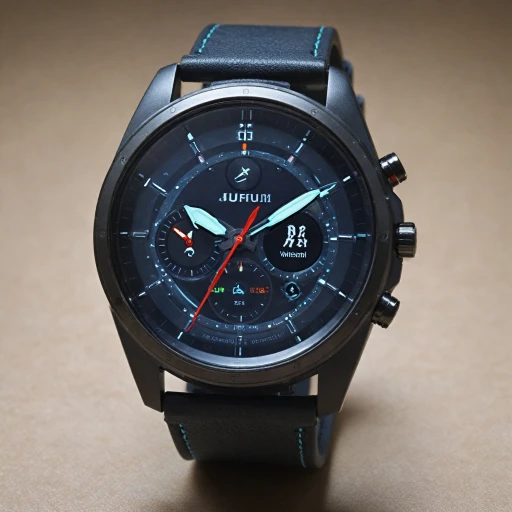
The Rise of the Pebble Smartwatch
A Glimpse into the Pebble Innovation
In the fast-paced world of wearable technology, the Pebble smartwatch emerged as a transformative force, captaining a new wave of interest in smart wrist technology. This journey began with a revolutionary crowdfunding campaign on Kickstarter. Not just any campaign; it set a precedent in the digital age, spotlighting how a blend of visionary ideas and community support could reshape the landscape of smartwatches.
The original Pebble watch broke ground by offering features that were unheard of at the time. While many devices like the Apple Watch promised a multitude of features, the Pebble embraced a simpler, more user-centric approach. With its distinct e-paper display, Pebble watches were not only visible in bright sunlight but also came adorned with impressive week-long battery life that surpassed many of its contemporaries.
Among the core highlights was its open-source nature. The open ecosystem encouraged developers to craft a variety of apps and watch faces, making each Pebble watch unique to its owner. This openness was a beacon for developers who could see their contributions embraced worldwide.
From Kickstarter shipping to the success of the Pebble Time collection, the company's rise was nothing short of phenomenal. The Pebble's affordability and feature set, including basic notifications and fitness tracking capabilities, made it a household name among tech enthusiasts and casual users alike. This wearable tech device's ascent was a testament to innovation and persistence, setting a standard for future smartwatches.
As we delve into the succeeding sections, we will further explore how Pebble's legacy influenced the industry, how it fostered an avid community, and the challenges it faced along the way. Stay tuned as we unravel more facets of these groundbreaking smartwatches, a testament to bold creativity and ingenuity.
Unique Features of the Pebble Watch
The Revolutionary Display Features
The Pebble smartwatch stood out in the crowded market of wrist devices primarily due to its innovative display technology. Unlike the typical LCD screens seen in many smartwatches, Pebble leveraged e-paper technology in its core design. This choice offered several benefits beyond just a unique aesthetic. The e-paper display contributed significantly to the watch's distinct and appealing reputation, boasting a remarkable up-to-seven-day battery life—unlike anything smart watch users had experienced back then with their limited day batteries.An Open Source Horizon
Another key feature of the Pebble watch that drew enthusiasts was its commitment to an open-source platform. This environment encouraged third-party developers to create apps and watch faces tailored to suit a wide array of tastes and needs. For those who owned Pebble, it wasn't just about telling time; it was about customizing the device to become an extension of one's persona. Such features have been pivotal in establishing a dedicated community around Pebble, which was further strengthened by the availability of a vibrant app ecosystem.Core Functional Innovations
Pebble smartwatches also impressed with their focus on core functionalities, emphasizing practical and user-friendly features over flashy gimmicks. These included notifications, fitness tracking, and music control—simple yet essential features that many other smartwatches of the time struggled to integrate effectively. An aspect worth noting is how Pebble, through its devices like the Pebble Time and Pebble Steel, maintained a commendable balance between functionality and minimalist design, making it appealing to users who valued both utility and style. For more insight into how actual smartwatches are evolving, understanding the evolution of the watch can provide further context. These unique features set Pebble apart and contributed to its reputation as one of the best smartwatches of its time, capturing the imagination of users and developers alike.User Experience and Interface
Navigating the User Interface and Experience
The Pebble Smartwatch, with its minimalist design, brings a user interface that is both straightforward and efficient. Striking a balance between functionality and simplicity was a core objective of its developers. The black and white e-paper display, a standout feature of the original Pebble, ensures easy readability even under direct sunlight, a key advantage over some of its color-screen competitors. This display choice, uncommon in many modern smartwatches, contributes to the exceptional battery life that users have celebrated. Equipped with intuitive navigation, Pebble provides a streamlined experience through its physical buttons. Unlike the touch interfaces that dominate the wearable market, these buttons are used for precise scrolling and selection, a feature that resonates well with those who prefer tactile feedback. The interface allows users to efficiently toggle between apps, check notifications, and switch watch faces with ease. Additionally, the Pebble watch boasts compatibility with both iOS and Android devices, expanding its user base and ensuring versatility. This compatibility aligns with the brand's ethos of accessibility and openness, further enriched by its open-source platform. Developers and tech enthusiasts have been drawn to its potential for customization, allowing users to personalize their Pebble experience. Furthermore, the Pebble Time series builds on the success of its predecessor, introducing a color display while maintaining the efficient interface that made the original a favorite. The battery life remains a strong point, with the Pebble smartwatch comfortably offering up to a seven-day battery life, far surpassing many competitors. The Pebble watch continues to be remembered for its user-friendly approach, a core component of its appeal. For those interested in enhancing life with functional and accessible wearables, further information on smartwatches can be explored here.Impact on the Wearable Tech Industry
The Pebble's Revolutionary Influence in Wearable Tech
The Pebble smartwatch marked an innovative turning point for the wearable tech industry. When the original Pebble device first emerged, it captured attention across the globe by leading a new wave of smartwatches that provided a fresh perspective on time management and connectivity. In a market dominated by established tech giants, Pebble watches managed to position themselves as a core duo of affordability and functionality. One of the standout features was the Pebble's open-source operating system, which allowed for a thriving community of developers to create numerous apps and watch faces. This community-focused approach established a unique ecosystem around the Pebble brand, promoting a diverse range of functionalities that were widely appreciated by tech enthusiasts and newcomers alike. Despite its initial success and influence, the Pebble smartwatch’s journey was not without challenges. The competition was fierce, with other tech companies, like the Apple Watch, innovating rapidly to capture market share. However, Pebble's commitment to excellent battery life, often extending to a full day battery, and its distinctive e-ink display set it apart from the rest. From their commencement on Kickstarter to the peak of their popularity, Pebble smartwatches had a significant effect on how consumers viewed wearable technology. Their approach influenced perceptions on device durability, open-source compatibility, and the potential for community-driven innovation. Yet, as the landscape of smartwatches continued to evolve, Pebble watches remained an exemplar of what pioneering tech could achieve. While modern devices continue to push the envelope, the legacy of Pebble’s contributions to the wearables sector remains steadfast. Pebble demonstrated that even smaller companies could ship products with an appealing blend of utility and creativity, making a lasting impact on the industry and continuing to inspire new advancements in wearable tech.Community and Developer Ecosystem
Forging a Community and Developer Ecosystem
The Pebble smartwatch achieved more than just being a pioneering device; it built a vibrant community of users and developers. This community became a core element in the enduring legacy of Pebble watches. Pebble's open platform encouraged users to engage deeply with their devices, fostering a space for innovation and creativity that few other smartwatches could match at the time. Using the open-source approach, developers had the liberty to create numerous apps and watch faces, influencing the diversity and functionality of the Pebble experience. The watch's open-source software attracted both hobbyists and professional developers who were keen on pushing the boundaries of what could be done with smart devices. It was this openness that helped the Pebble maintain a day-to-day relevance long after its initial release.- Community Engagement: Users of Pebble smartwatches were more than just consumers; they were part of a shared journey in redefining what a smartwatch could do. This engaged audience provided feedback that was invaluable for iterative improvements and new feature developments.
- Developers' Playground: With a developer-friendly platform and resources, Pebble allowed app creators to design from simple to complex functionalities, bringing personalized utility to each individual watch. This includes everything from fitness trackers to weather apps that suited specific needs of users.
Challenges and Legacy of the Pebble Watch
Overcoming Hurdles and Leaving a Mark
The Pebble smartwatch, despite its innovative spirit, faced several challenges that ultimately shaped its legacy. One of the core issues was the intense competition from tech giants like Apple and Samsung, whose smartwatches boasted more advanced features and broader app ecosystems. The Pebble watch, with its unique e-paper display and impressive battery life, struggled to maintain its market position against these powerhouses.
Shipping delays and production hurdles also plagued the company. The original Pebble watch, which gained significant attention through its Kickstarter campaign, faced difficulties in meeting the high demand. These logistical challenges affected customer satisfaction and the company's reputation. Despite these setbacks, the Pebble smartwatch remained a beloved device among its users, thanks to its open-source nature and customizable watch faces.
Community and Developer Support
The Pebble's open-source platform fostered a vibrant community of developers and enthusiasts. This community-driven approach allowed for a plethora of apps and watch faces, enhancing the user experience. However, sustaining this ecosystem proved challenging as the company struggled financially. The support from developers, who continued to create and update apps, was crucial in keeping the Pebble relevant in the ever-evolving smartwatch market.
The End of an Era and Lasting Influence
Ultimately, the financial difficulties led to the company's acquisition, marking the end of Pebble's journey as an independent entity. Despite this, the Pebble smartwatch left a lasting impact on the wearable tech industry. It demonstrated the potential of crowdfunding for tech products and highlighted the importance of community engagement in product development.
While the Pebble watches are no longer in production, their influence can still be seen in today's smartwatches. The emphasis on battery life, customizable interfaces, and community-driven innovation are aspects that many modern devices continue to embrace. The legacy of the Pebble smartwatch lives on, reminding us of a time when a small company dared to challenge the giants of the tech world.












